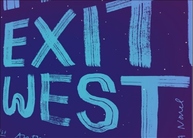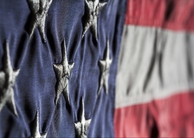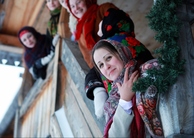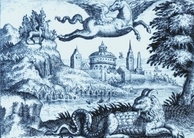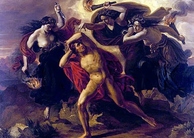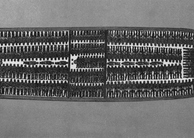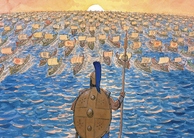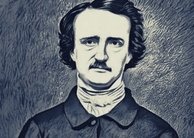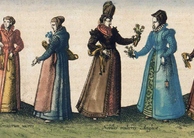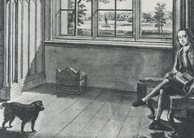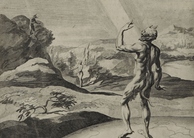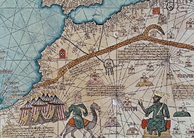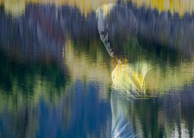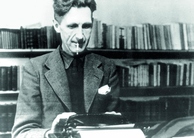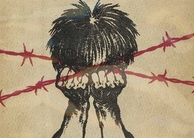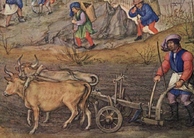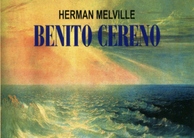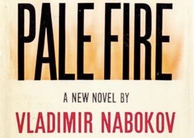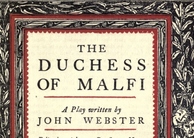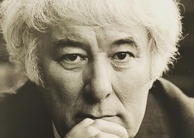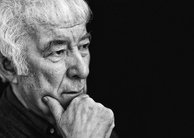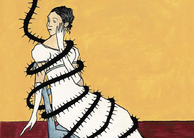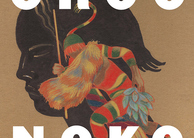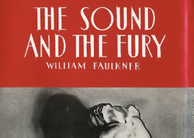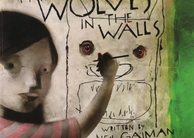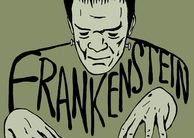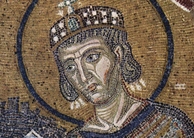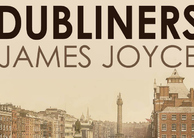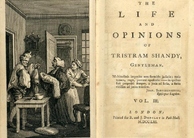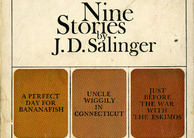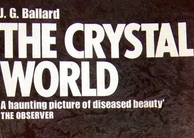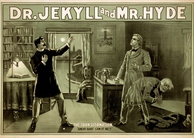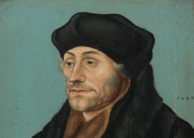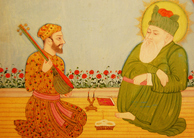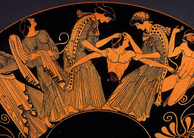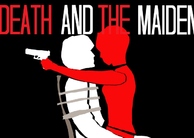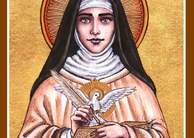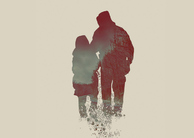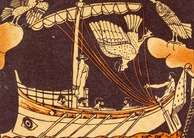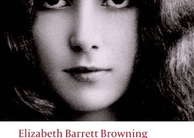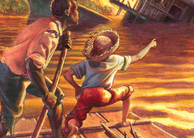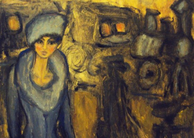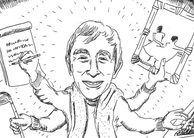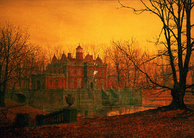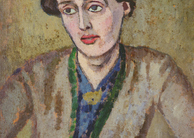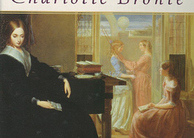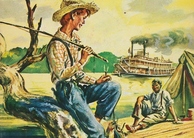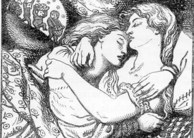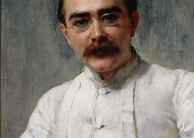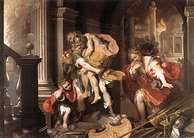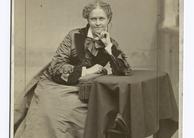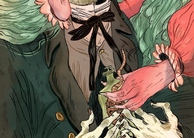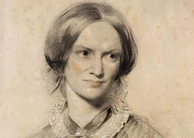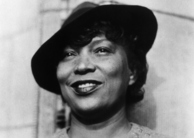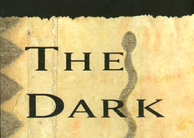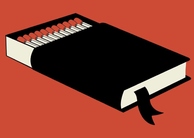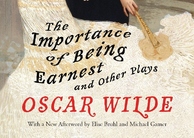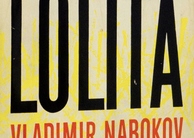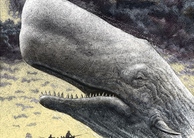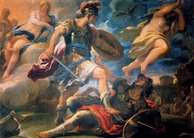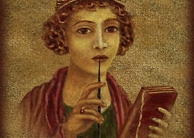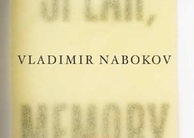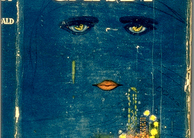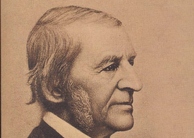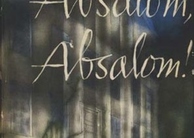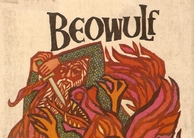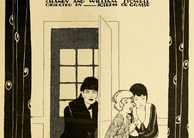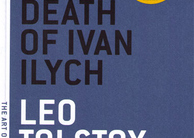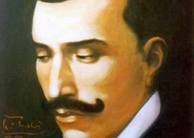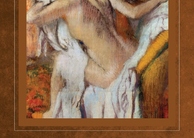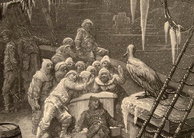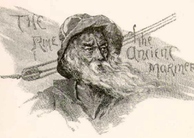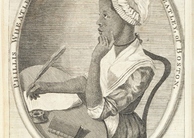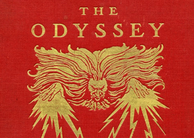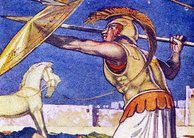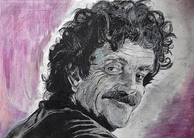|
Literature (tagged articles)
The keyword Literature is tagged in the following 137 articles.
2023, Vol. 15 No. 02
This literary analysis compares the spiritual landscape of Aldous Huxley’s Brave New World against his nonfiction work, The Perennial Philosophy. In Brave New World, Huxley’s World State appears spiritually promising. It embeds self-... Read Article »
2022, Vol. 14 No. 09
Woolfian Scholars regularly denote the moments where Woolf’s characters feel inexplicably connected and inseparable from one another as representing the spiritual and mystic beliefs of their author. I want to reframe this notion, considering... Read Article »
2022, Vol. 14 No. 09
In adapting the twelfth-century story Layla and Majnun, Susan Youssef’s 2011 film Habibi Rasak Kharban re-imagines the Arabic folk tale in the context of Israeli occupation of Palestine, wherein the significance of journeys arises... Read Article »
2022, Vol. 14 No. 09
The Goldfinch (2013) by Donna Tartt is a novel that explores the conditions of grief and escalating lengths characters will go to survive the traumas and mysteries of life. This story of guilt and loss—intermixed with love and longing&mdash... Read Article »
2022, Vol. 14 No. 04
The 17th and 18th centuries saw a wide proliferation of aesthetic discourse through which the picturesque emerged to capture the type of beauty derived from the exchange of in vivo vigor for the spirit of artistic medium. While the metaphysical... Read Article »
2022, Vol. 14 No. 02
India was ruled by the Timurid-Mughal dynasty from 1526 to 1857. This period is mainly recognised for its art and architecture. The Timurid-Mughals also promoted knowledge and scholarship. Two of the Mughal emperors, Babur and Jahangir, wrote their... Read Article »
2022, Vol. 14 No. 02
This article explores the expression of the Gothic romance genre in the 21st century, by examining Mike Flannagan’s The Haunting of Bly Manor. Very little Literature focuses on contemporary expressions of this genre. The Gothic reflects the... Read Article »
2022, Vol. 14 No. 01
Escaping from your past is hopeless. However, under circular time, running from anything is completely useless––no matter what it is, it will always catch up to you. While Mohsin Hamid’s Exit West mainly depicts a world where well... Read Article »
2021, Vol. 13 No. 12
This thesis explores the inherent conflict between liberty and equality—the twin pillars on which the United States and its Constitution are predicated—and the materialization of this conflict in storm center texts, whose subjects cover... Read Article »
2021, Vol. 13 No. 09
American Transcendentalism (1836-1860), despite having an amorphous and transient lifespan, holds strong importance in American history: religious, philosophical, and literary. Not only did this movement approach societal and spiritual life with... Read Article »
2021, Vol. 13 No. 04
While the history of ethnography in Russia dates back to the Kievan Rus era, modern ethnographic production in Russia developed in the 17th century and expanded during the late 18th and early 19th centuries as interest in folktales and in the lives... Read Article »
2021, Vol. 13 No. 04
The Demon-Lover functions as a significant motif in English Gothic ballad tradition, which scholar Hugh Shields articulates as a “supernatural intrusion into a narrative which is of this world” (Shields p. 107). While this intrusion... Read Article »
2021, Vol. 13 No. 04
Often thought to be a recent development of pop culture, writers have been using biting clapbacks in response to criticism since antiquity. This essay will explore how poet and scholar Sir Philip Sidney effectively manipulated poetic devices in... Read Article »
2021, Vol. 13 No. 03
Justice in The Eumenides is established as an objective entity and it is in The Eumenides that it is solidified as a concept which has causal power over the material world. This metaphysical abstraction seeks to gain purchase through interpersonal... Read Article »
2021, Vol. 13 No. 03
In recent years, questions of racial, religious, and sexual inequalities across classic Literature have left many educators and students wondering if the canon of Western works are sufficient in portraying the many diverse peoples that existed during... Read Article »
2021, Vol. 13 No. 03
Intersecting Edouard Glissant’s poetics with Hortense Spillers’ theory of race, gender, and sexuality alchemizes a new conception of the Middle Passage’s spatiotemporality. With the slave trade haunting the living, this paper attempts... Read Article »
2021, Vol. 13 No. 02
Although most Ancient Greek Literature focused on male characters, a literary analysis of Homeric poetry reveals an inquisition of femininity, motherhood, and what it meant to be a woman in Ancient Greece. Throughout the epic The Iliad and its sequel... Read Article »
2021, Vol. 13 No. 02
The Virgin Suicides written by Jeffrey Eugenides, as well as Sofia Coppola’s film adaptation, utilize the literary and cinematic tropes of suicide to explore female suicides as romantic notions and assertions of agency within the teenage world... Read Article »
2021, Vol. 13 No. 02
Traditional slave narratives follow a set of conventions that helped abolitionists recognize them as factual and trustworthy stories. Previously enslaved authors subverted those conventions to take control of their narratives and expose white abolitionists... Read Article »
2021, Vol. 13 No. 01
Edgar Allan Poe is known for writing about a wide variety of controversial topics, such as death, murder, and addiction. However, one topic that his work tends to avoid is race and/or racism. Instead, he often chooses to include marginalized groups... Read Article »
2021, Vol. 13 No. 01
The inescapability and influence of the past becomes most discernable with homecoming. A particularly powerful sense of nostalgia concentrates in textiles, especially when these objects purposefully invoke the past. More often than not, theatre... Read Article »
2021, Vol. 13 No. 01
Much contemporary literary criticism has been devoted to Horace Walpole’s novel, The Castle of Otranto; so, too, has much criticism been directed toward the author’s villa, Strawberry Hill. And yet the conversations surrounding... Read Article »
2021, Vol. 13 No. 01
The postsecular turn of the late 1990’s refers to the emergence of a critical theory which challenges an important modern assumption: that secular ideologies are inherently more valid and truthful than religious ideologies. Other developments... Read Article »
2020, Vol. 12 No. 12
Through major works including “The Franklin’s Tale,” Troilus and Criseyde, and “Parliament of Fowls,” Chaucer illuminates the complexity of the popular writing trope of courtly love. His accounts of courtly love border... Read Article »
2020, Vol. 12 No. 12
This paper focuses on the manifestation of an unorthodox charisma in the devil figures of John Milton’s Paradise Lost and Johann Wolfgang von Goethe’s Faust: Part One. Using the respective connotations of ‘charisma’ with... Read Article »
2020, Vol. 12 No. 11
This work aims to integrate postcolonial scholarship into some basic theoretical foundations of a mainstream economic curriculum. Noting the insufficiencies of neoclassical economics to deal with problems of cultural difference and priority, the... Read Article »
2020, Vol. 12 No. 10
Bogs are one of Ireland’s most notable and mysterious landscapes. As explored in the work of Seamus Heaney, the bog’s capacity to preserve memory across generations makes it a melancholic terrain that is uniquely suited to explorations... Read Article »
2020, Vol. 12 No. 10
The fifteenth-century Middle English romance "The Sultan of Babylon" partakes in the Orientalist literary tradition through the poet's linguistic economy of the Other. The paradoxical shortages and surpluses of ethnic descriptors of East female... Read Article »
2020, Vol. 12 No. 10
This paper presents a comparative analysis of Oedipus at Colonus, a play written by the ancient Greek tragedian Sophocles, and Gran Torino, an American film directed by Clint Eastwood. The two literary productions, although remote as they seem,... Read Article »
2020, Vol. 12 No. 09
Sylvia Plath’s posthumously published collection of poetry, Ariel, is perhaps best defined by the vivid imagery that delves deep into Plath’s psyche. Throughout the collection, Plath explores dimensions of herself: her past, present,... Read Article »
2020, Vol. 12 No. 02
In the opening of J. M. Richards’s post-war account of suburbia, The Castles on the Ground, the author's commentary is unusually sympathetic to a phenomenon that throughout the twentieth-century had either been critically neglected or judged... Read Article »
2019, Vol. 11 No. 10
Depicting the rugged reintegration of Ichiro Yamada, a no-no boy imprisoned during WWII, Japanese American author John Okada presents a traumatized and conflicted Japanese American community during the mid-1940s in his novel No-No Boy (1957). Applying... Read Article »
2019, Vol. 11 No. 02
The corpus of Older Scots Literature is hyper-attentive to the themes and issues surrounding nationhood and sovereignty. Authors of the fifteenth and sixteenth centuries often espoused and exploited the national pride of the Scottish people, producing... Read Article »
2019, Vol. 11 No. 01
Until the outbreak of civil war, the United States would continually try and fail to subdue the existential threat of slavery, with each attempt exacerbating the sectional tensions between slave and free states. In 1830, Massachusetts Senator Daniel... Read Article »
2019, Vol. 11 No. 01
Pale Fire by Vladimir Nabokov is a masterpiece of Literature that seems to transform into a remarkably personal experience for anyone who approaches the text. The book reads in many ways like a game full of mysteries and innuendos and has in its... Read Article »
2019, Vol. 11 No. 01
The staged plays of the early Jacobean period are valuable textual products for the literary critic, the cultural researcher and the historian alike. These plays are significant containers of knowledge about the mutually reinforcing social and political... Read Article »
2018, Vol. 10 No. 10
Innocent lamb, savage tiger, free-flying eagle – time after time animals interrupt poetry as the ideal, the muse, the hero, or the grotesque operating alongside humanity. In tracking animal imagery throughout contemporary Irish poetry, we... Read Article »
2018, Vol. 10 No. 03
In his poem ‘Punishment’ from the poetry collection North (1975), Seamus Heaney picks up the voice of a witness who is suspended between the possibilities of love, silence, voyeurism, outrage and above all, the understanding of the process... Read Article »
2018, Vol. 10 No. 03
Sexual violence and coercion became hot topics in 2017, with endless headlines. However, these problems and issues are not new, nor are they confined to a single segment of society. Rather, they have longstanding roots within patriarchal society... Read Article »
2017, Vol. 9 No. 12
Since its emergence in the 19th century, fantasy fiction has proliferated throughout the world, from the global craze of Lord of the Rings (1954) to Harry Potter (1997). As a sub-genre of fantasy based on Chinese traditional mythology and martial... Read Article »
2017, Vol. 9 No. 11
The arrival of Spanish conquistadors in the “New World” at the end of the fifteenth century triggered an age of violence, oppression, and colonization that lasted until the United States took the stage as a modern colonial power in 1898... Read Article »
2017, Vol. 9 No. 11
The period of time from the Bebop era to the present—mid-1940s onwards—has been an era of great cultural evolution in the United States, and in few groups more so than the African American community. A factor particularly significant... Read Article »
2017, Vol. 9 No. 10
Empirical psychology first emerged as a scientific discipline during the eighteenth century when it was launched into the academic realm by being taught in universities, appearing as chapters in philosophy manuals, and debuting as the topic of scientific... Read Article »
2017, Vol. 9 No. 05
Aphra Behn’s Oroonoko offers a complex representation of the semiotic and socio-political meaning of seventeenth-century torture and death and the intersectional manner in which physical agony coincides with authoritative colonial politics... Read Article »
2017, Vol. 9 No. 05
The character of Benjy Compson from William Faulkner’s 1929 novel The Sound and the Fury is a mythic and Christ-like figure with the divine gift of prophecy rather than the retarded man-child that the other characters in the novel view him... Read Article »
2017, Vol. 9 No. 04
Music functions as a source of healing in Toni Morrison’s Jazz, both to the bird who is inexplicably sad and for the broken relationship between Violet and Joe, the novel’s two main adult characters. The bird cheers up and regains its... Read Article »
2017, Vol. 9 No. 03
From the point of view of childhood, modern Western society shows many parallels to the Romantic Age. While the industrial economy caused rapid changes to the landscape and lives of children, forcing millions of them into labor, the informational... Read Article »
2017, Vol. 9 No. 03
Anyone in pursuit of knowledge is bound to encounter sex somewhere along the way. In the early 19th century, a period during which sex was unspeakable, fiction writers developed a distinct penchant for the unknown.[2] Mary Shelley’s Frankenstein... Read Article »
2017, Vol. 9 No. 02
To briefly set the scene, the fourth century was a complex period for Christianity. It moved from being a persecuted sect to being supported by a new Christian Emperor, to vying with Constantine’s successors over unorthodox beliefs, to being... Read Article »
2017, Vol. 9 No. 01
When James Joyce rewrote “The Sisters,” intending it to serve as an introduction to the whole of Dubliners, he altered the first line of the story with much significance: “There was no hope for him this time” (19)[1]. As... Read Article »
2017, Vol. 9 No. 01
The Literature of the 18th century includes parodies, satires, and denunciations; however, the role of sentimentality usually comes second when discussing the literary movements of the century. The author of The Life and Opinions of Tristram Shandy... Read Article »
2016, Vol. 8 No. 11
J. D. Salinger is a household name in America, but relatively few people know of his Glass family characters. Seven impossibly bright and witty adult siblings and their parents populate his later work, from their first appearance in the short story... Read Article »
2016, Vol. 8 No. 11
J. G. Ballard’s The Crystal World (1966) is a prismatic text, apparently translucent yet linguistically opaque, with moments of unexpected ontological intricacy. Like the crystals consuming the forest, Ballard’s descriptive language... Read Article »
2016, Vol. 8 No. 11
Robert Louis Stevenson typifies an anxiety shared by many prolific Victorian writers: that God will disappear as human psychology is readily researched and understood. Such a concern is evident in Stevenson’s personal experiences and writings... Read Article »
2016, Vol. 8 No. 10
Pride and Prejudice, the work of nineteenth century novelist Jane Austen, has been celebrated for over two-hundred years since its first publication. It has been adapted, reinvented and re-imagined over and over again to the delight of both loyal... Read Article »
2016, Vol. 8 No. 09
The Victorian Age was a time of rapid economic, social, and cultural change throughout England. Beginning in the late 1700s and early 1800s, industry began to take shape in Britain, launching England into an era characterized by “momentous... Read Article »
2016, Vol. 8 No. 08
Often called the “prince of the humanists” Erasmus of Rotterdam (1466-1536) was one of the most influential European philosophers and theologians of the early modern period. However, today he is often overshadowed by his more radical... Read Article »
2016, Vol. 8 No. 03
Ab'ul Hasan Yamīn ud-Dīn Khusrau (1253-1325) is one of the most celebrated poets of medieval India, writing both in Persian, the courtly language of Muslims of the Sultanate period, and Hindavī, the vernacular language of the Delhi area. Also... Read Article »
2015, Vol. 7 No. 10
People love a good story. A good story can be intriguingly informative, a good story can well up deep emotions and a good story can carry culture, history and tradition. It was through storytelling that many ancient cultures preserved and passed... Read Article »
2015, Vol. 7 No. 10
In Euripides’ Bacchae, careful examination of the character Dionysus illuminates discrepancies in action based on gender. Ultimately, Dionysus’ effeminate nature compounded with his subversive measures toward women and male proclivities... Read Article »
2015, Vol. 7 No. 08
One Victorian writer whose similarities to Nietzsche continue to receive sustained attention is Oscar Wilde—even though, as is the case with most of Nietzsche’s English-speaking contemporaries, they probably never read one another (Allen... Read Article »
2015, Vol. 7 No. 06
The theme of feminism is present in Ariel Dorfman’s play, Death and the Maiden, and Laura Esquivel’s novel, Like Water for Chocolate. Both works showcase strong female protagonists endeavouring to escape and solve the issues of their... Read Article »
2015, Vol. 7 No. 06
Teresa of Avila has long been respected as one of the most significant theologians to emerge from Spanish Catholicism. Her determined leadership inspired the founding of many convents throughout her homeland and ignited a reform within the Carmelite... Read Article »
2015, Vol. 7 No. 06
All Quiet on the Western Front, Erich Maria Remarque’s celebrated 1929 novel, depicts the emotional and brutal experience of World War I through the eyes of a young German soldier. This soldier, Paul Baümer, grapples with death, regret... Read Article »
2015, Vol. 7 No. 05
In the first scene of The Road (2006), Cormac McCarthy encapsulates the bleak psychology of his post-apocalyptic novel with a metaphor of blindness that symbolically translates the confusion and hopelessness of his desolate world. In a normal setting... Read Article »
2015, Vol. 7 No. 04
Oscar Wilde’s The Picture of Dorian Gray, Bram Stoker’s Dracula, and Robert Louis Stevenson’s Strange Case of Dr. Jekyll and Mr. Hyde are all "Democratic Age"1 novels that evoke a theme of appearance versus reality. In Wilde&rsquo... Read Article »
2015, Vol. 7 No. 04
In a 1920 speech on women’s Literature, the cultural critic Zhou Zuoren argued that the value of Literature lies in its power to show us new human perspectives and “erase all boundaries and distances” (Zhou 1920), as spoken in... Read Article »
2015, Vol. 7 No. 03
“The Man Who Would Be King” (1888)[1] is one of Rudyard Kipling’s most well known and highly acclaimed short stories. Michael Caine, Sean Connery, and Christopher Plummer starred in John Huston’s classic film adaptation (... Read Article »
2015, Vol. 7 No. 03
The defining characteristics of Odysseus in classical Literature are interpreted in wildly different ways by different authors: he is portrayed as a hero in Homer’s The Odyssey, a villain in Sophocles’ Philoctetes, a self-serving opportunist... Read Article »
2015, Vol. 7 No. 03
Anti-semitism was a prevailing cultural sentiment in Europe, particularly in Great Britain, during the period when some of English Literature's most celebrated figures, including Marlowe, Shakespeare, Donne, and Chaucer, penned their famous works... Read Article »
2015, Vol. 7 No. 03
Elizabeth Barrett Browning’s Aurora Leigh (1856) is an apocalyptic work, as seen in Aurora and Romney’s vision of the New Jerusalem. Barrett Browning was interested in the Apocalypse in all its literary transformations for most... Read Article »
2015, Vol. 11 No. 1
The early 20th century saw the rise of a unique subgenre of science fiction and horror Literature known as weird fiction. H.P Lovecraft, one of its more prolific and lasting contributors, is rightly considered one of the fathers of the genre. Like... Read Article »
2014, Vol. 6 No. 11
Since its publication in 1884, Mark Twain’s Adventures of Huckleberry Finn has been construed to have numerous meanings, many of them controversial or unfounded, and the relationship of Huckleberry Finn and Jim in Twain’s book has not... Read Article »
2014, Vol. 6 No. 10
Although the novel is mainly about unhappy families, Tolstoy makes the story of the one happy family, Ekaterina Scherbatsky (Kitty) and Konstantin Levin (Kostya), just as interesting as the others. Although every other relationship seems to tear... Read Article »
2014, Vol. 6 No. 10
Charles Dickens’ Hard Times and Alfred Tennyson’s poem Mariana both invite readers to explore notions of utopia and the ideal setting for human beings. In a remarkably similar rhetorical process, both works present readers with a pair... Read Article »
2014, Vol. 6 No. 09
In an interview in The Paris Review (1968), John Updike denies that characterization is a primary goal of fiction. While he believes that narratives can contain psychological insights, he argues that the “substance” of a story is the... Read Article »
2014, Vol. 4 No. 1
This article is a brief overview of The Lorax, by Dr. Seuss, the story of a repentant ex-industrialist who tells a tale of environmental degradation in the name of industrialism, progress, and profit, heedless of warnings from the Lorax—who... Read Article »
2014, Vol. 6 No. 06
As an African American author, Toni Morrison is acutely aware of the pain that is intertwined with the history of her history. She articulates the debilitating physical and psychological strain that slavery, prejudices, and discrimination placed... Read Article »
2014, Vol. 6 No. 05
Ever since its original emergence, Gothic fiction has been shaped by a unique narrative direction that is often described by scholars and readers alike as retrospective, repetitive, or circular in nature. Gothic texts progress as if through a series... Read Article »
2014, Vol. 6 No. 04
When examining the works of both George Eliot and Virginia Woolf, many critics are quick to assess the credibility and quality of characters based on how they react to the external experiences they are faced with in their imaginary worlds. However... Read Article »
2014, Vol. 6 No. 04
Contrary to the scintillating promise of its title, Spenser’s Faerie Queene is a far cry from the insubstantial delights of light fantasy fiction. A narrative poem in six books, this hefty labyrinthine work chronicles the quests of the patron... Read Article »
2014, Vol. 6 No. 04
Charlotte Brontë invests gothic elements in Jane Eyre with a symbolic meaning to create a new, ‘female’ language. It is through this female Gothic language that Brontë creates a heroine whose autobiographical mode of writing... Read Article »
2014, Vol. 6 No. 03
Whether real or symbolic, the family and the relationships within family units are a frequent theme in Mark Twain’s classic Adventures of Huckleberry Finn. Because there are many parallels between the characters and events within Huck Finn... Read Article »
2014, Vol. 6 No. 01
In "Goblin Market" (1862), Christina Rossetti (1830‑1894) presents a story of two sisters who must endure carnal lust in order to embrace a higher and purer realm of sexuality: marriage. This poem is a story of renunciation, but not one of... Read Article »
2013, Vol. 5 No. 11
Critical opinion of Rudyard Kipling, his imperialism, and his oeuvre has radically changed in the last century. Depending on the literary history and the time period, Kipling has been seen as either an exclusively South African poet (Warren 415),... Read Article »
2009, Vol. 5 No. 2
With these haunting final words, the young queen of Virgil's Aeneid, Dido, takes her life on a flaming pyre of her lover's belongings. The death of Dido is one of the most poignant moments in classical Literature. Dido begins as an independent queen... Read Article »
2013, Vol. 5 No. 10
Critics often ignore transracial adoption as a literary theme in both Catharine Sedgwick’s Hope Leslie; Or, Early Times in Massachusetts (1827) and Helen Hunt Jackson’s Ramona, A Story (1884), as these two texts’ portrayals of... Read Article »
2013, Vol. 5 No. 08
William Faulkner’s “A Rose for Emily” focuses on the life and death of Emily Grierson, a monumental figure representing the traditional South in her hometown of Jefferson, Mississippi. Although the story begins with her death,... Read Article »
2012, Vol. 4 No. 11
When Daphne DuMaurier's acclaimed Gothic romance novel Rebecca debuted in 1938, it was devoured by the female readers of its day. Ultimately, however, criticisms of DuMaurier's most famous novel were quick to point out its irrefutable resemblance... Read Article »
2012, Vol. 4 No. 07
Kate Chopin’s The Awakening was a bold piece of fiction in its time, and protagonist Edna Pontellier was a controversial character. She upset many nineteenth century expectations for women and their supposed roles. One of her most shocking... Read Article »
2012, Vol. 4 No. 05
Zora Neale Hurston is the author of the acclaimed short story Sweat. The story was published in 1926, an incredible accomplishment considering the obstacles faced by black female authors at the time. Viewing the piece through the lens of feminist... Read Article »
2012, Vol. 4 No. 02
In James Kirkup and Ernest Jones’ English translation of Camara Laye’s 1953 autobiography, The Dark Child, there is a significant stylistic decision in the final sentence. Kirkup and Jones’ version reads: “Later on I felt... Read Article »
2012, Vol. 4 No. 01
English Literature is all-encompassing: it ranges from societal utilitarianism of the didactic through to the celebration of individualism embodied in post-modern work. Literature, as part of a larger cultural body, is both instructive and entertaining... Read Article »
2011, Vol. 3 No. 12
The 2005 film Pride & Prejudice opens with sound rather than picture, but it is not the expected man-made musical score that fills the air. Rather it is nature’s music: the song of birds, particularly blackbirds. As Lydia Martin’... Read Article »
2011, Vol. 3 No. 12
Published in 1767, The Female American, Or, The Adventures of Unca Eliza Winkfield claims to be the spiritual autobiography of an Unca Eliza Winkfield. Like Defoe’s Robinson Crusoe, this narrative is peppered with bits of true historical details... Read Article »
2011, Vol. 3 No. 11
Dollhouse received mixed critical reviews and a fairly low number of viewers, but it is reasonable to argue that there has never been anything quite comparable to it before. Dollhouse combined elements of dystopian science fiction, fast paced action... Read Article »
2011, Vol. 3 No. 10
Domestic fiction reigned in women’s Literature during the nineteenth-century. These narratives defined ”True Womanhood,” where the female exemplified four pillars: piety, purity, domesticity, and submissiveness. They are meant... Read Article »
2011, Vol. 3 No. 06
The 18th century was one in which exaltation of wit and reason came to the forefront of Literature in the form of both Horatian and Juvenalian satires, which, through keen observation and sharp nimbleness of thought, exposed the superficial follies... Read Article »
2011, Vol. 3 No. 06
Jazz is not a solitary art. Its form does not only reveal itself in the music. Jazz finds manifestation in many other forms of expression, including the powerful narratives encompassing jazz Literature. In all of its modes, jazz narrates a people... Read Article »
2011, Vol. 3 No. 06
Oscar Wilde's The Importance of Being Earnest and Henry James' Daisy Miller seemingly differ greatly in style. The forms--play and nouvelle--are of course different. Earnest is 'one of the great comedies in the English language' (Cave 419). Daisy... Read Article »
2011, Vol. 3 No. 05
Published in 1954, John Ronald Reuel Tolkien’s The Lord of the Rings is a follow-up to his 1937 book, The Hobbit. An epic fantasy novel originally published in three volumes (The Fellowship of the King, The Two Towers, The Return of the King... Read Article »
2011, Vol. 3 No. 05
The historic 1962 conference at Makerere University in Kampala, Uganda brought together scholars and writers from various parts of the continent to discuss the state of African Literature: who should write it, what it should depict, and –... Read Article »
2011, Vol. 3 No. 05
In Vladimir Nabokov's Lolita, the overriding force of the narrator, Humbert Humbert, is his need to prove himself master of everything: other people, his own desires, fate, and language itself. Time and time again through Lolita we see Humbert&rsquo... Read Article »
2011, Vol. 3 No. 03
In two postcolonial novels, The God Of Small Things by Arundhati Roy and Secrets by Nuruddin Farah, both authors use the politics of families to paint a vivid picture of the social, cultural and political conditions of their nations. Roy and Farah... Read Article »
2011, Vol. 3 No. 03
Ahab, the monomaniacal ship captain of Herman Melville’s Moby Dick, is a man plagued by revenge. Searching the seas for the whale who took his leg and along with it, his ability to effectively assimilate into society, Ahab continually shows... Read Article »
2011, Vol. 3 No. 03
Rebecca West’s 1918 novel The Return of the Soldier dissects the socioeconomic and psychological tensions wrought by the upheaval of the First World War. In a nuanced reiteration of the typical trope of a soldier’s return, Christopher... Read Article »
2011, Vol. 3 No. 02
In the Aeneid, Virgil depicts the struggle of the newly displaced Trojans to find a new home, under the leadership of Aeneas. The Trojans, having only recently lost the Trojan War to the Greeks, travel in search of a new home, eventually settling... Read Article »
2011, Vol. 3 No. 02
Based on his own definition of the term in “Godzilla vs. Post-Colonial,” Thomas King has created a piece of associational Literature in his 1989 novel Medicine River. He has done so not only through his focus on daily, seemingly mundane... Read Article »
2011, Vol. 3 No. 02
Reading Greek plays provides valuable insight into the relationships between gods and humans. While both gods and humans have fairly similar personalities Greek gods have a certain amount of power that, given motivation from an arrogant mortal,... Read Article »
2011, Vol. 3 No. 02
High school science textbooks are quick to point out that virtually everything in existence today was at some point formed by the intense heat, pressure and combustion of past stars. All the elements heavier than hydrogen and helium are formed in... Read Article »
2011, Vol. 3 No. 01
The insight that Vladimir Nabokov provides into the 1905 Russian Revolution, in his book Speak, Memory, sometimes merges with the general view--presented, for example, by Nicholas V. Riasanovsky in a more traditional account--but at many other times... Read Article »
2011, Vol. 3 No. 01
F. Scott Fitzgerald, as quoted by Matthew Bruccoli, recognized the importance of his own novel and its artistic achievements: “Gatsby was far from perfect in many ways but all in all it contains such prose as has never been written in America... Read Article »
2010, Vol. 2 No. 12
In the society that Giovanni Boccaccio’s The Decameron is set in, women generally are held in a lower social standing than men. As with most societies until relatively recently in history, women were not allowed to have a significant role... Read Article »
2010, Vol. 2 No. 11
What began in New England in the early nineteenth-century as a reform of the Congregational Church grew into what some scholars consider to be one of the most monumental movements of religion, philosophy and Literature in American history. Humbly... Read Article »
2010, Vol. 2 No. 11
William Faulkner’s Absalom, Absalom! begins in the year 1833, when the stranger, Thomas Stupen, rides into Jefferson, Mississippi, and promptly begins building himself an empire. He builds a plantation named Stupen’s Hundred, takes a... Read Article »
2010, Vol. 2 No. 10
Female writers of the Eighteenth Century often focused on the role of the female imagination in novel writing, poetry composition, and as an outlet for temporarily escaping a harsh world. In Maria, or The Wrongs of Woman, Mary Wollstonecraft... Read Article »
2010, Vol. 2 No. 07
The introduction of Christianity to England in 597 established a structured, uniform faith among a people accustomed to different branches and pockets of polytheistic paganism. Over the next seventy-five years, the burgeoning country quickly grew... Read Article »
2010, Vol. 2 No. 06
The Strange Case of Dr. Jekyll and Mr. Hyde by Robert Louis Stevenson proves to be an enduring literary illumination into the human psyche. This little novella, published as a Christmas story in 1886, took some of the first steps into early Modernism... Read Article »
2010, Vol. 2 No. 04
North and South is a novel defined by the resolution of binary conflicts: heroine Margaret Hale is presented with a number of divisions of sympathy, between industrialists and the working class, between conflicting views of Mr. Thornton, and even... Read Article »
2010, Vol. 2 No. 03
In Henrik Ibsen's A Doll's House, Nora Helmer spends most of her on-stage time as a doll: a vapid, passive character with little personality of her own. Her whole life is a construct of societal norms and the expectations of others. Until she comes... Read Article »
2010, Vol. 2 No. 03
In Leo Tolstoy's The Death of Ivan Illyich, the story's protagonist--Ivan--is dead before the story begins. The first chapter concerns itself with some of Ivan’s work associates. With the exception of a posthumous cameo, Tolstoy completely... Read Article »
2010, Vol. 2 No. 03
Every person has a birthplace, a starting point that offers a sense of identity for an individual. Through this start, this receding to the roots mentality, one examines their present in terms of their constructed past. Salman Rushdie touches upon... Read Article »
2010, Vol. 2 No. 03
Bohumil Hrabal was born in 1915, and lived through some of the most tumultuous years of Czech history. Hrabal grew up in the time of the First Republic, when Literature moved away from nationalism to a more aesthetic view. In this frame, Hrabal... Read Article »
2010, Vol. 2 No. 02
If Bulgakov is a well know name, the same cannot be said for Matos, who was a literary man considered one of the Croatian masters of Modernism, and a key persona in the country’s culture. He was not only a writer, but also a poet, a journalist... Read Article »
2010, Vol. 2 No. 02
Despite both being the leading female characters in their respective pieces, Christabel from Samuel Taylor Coleridge’s Christabel and Madeline from John Keats’ The Eve of St. Agnes have many striking similarities. Throughout both poems... Read Article »
2010, Vol. 2 No. 02
Carole Counihan argues that ‘men’s and women’s ability to produce, provide and consume food is a key measure of their power,’ (1998:2) whilst Jack Goody has argued, ‘gender hierarchies are maintained, in part, though... Read Article »
2010, Vol. 2 No. 01
Samuel Taylor Coleridge’s “The Rime of the Ancient Mariner” is about a man on a voyage by ship, who in one impulsive and heinous act, changes the course of his life – and death. The Mariner faces an inner struggle over... Read Article »
2010, Vol. 2 No. 01
In Mary Shelley’s Frankenstein, the author characterizes each woman as passive, disposable and serving a utilitarian function. Female characters like Safie, Elizabeth, Justine, Margaret and Agatha provide nothing more but a channel of action... Read Article »
2010, Vol. 2 No. 01
Jean-Baptiste Clamence in Albert Camus's The Fall and the mysterious Ancient Mariner in Samuel Taylor Coleridge’s Rime of the Ancient Mariner each experience something that radically shifts his worldview and his view of himself. Arrogant and... Read Article »
2010, Vol. 2 No. 01
The attacks of September 11th have frequently been characterized as unimaginable, capable of inflicting confusion and emotional trauma beyond the scope of other historical events. On September 12th, 2001, N.R. Kleinfeld of the New York Times asserted... Read Article »
2009, Vol. 1 No. 12
Children’s Literature in the context of this research paper (and hopefully too in the eyes of the majority) is the ultimate escape; it is neither box nor leash nor constraint of any sort. It is the one genre of Literature that does not hold... Read Article »
2009, Vol. 1 No. 12
When considering historical Literature that is based upon people who once lived, readers often ask where the details are taken directly from historical accounts, and where they differ. This is a perfectly valid lens through which to view the work... Read Article »
2009, Vol. 1 No. 11
Even in fairy tales and fantastical legends, the trespassing of the breathing upon the domain of the spirits is rare. It is a disturbing idea; when the dead visit our world, we can at least find comfort in numbers. Yet the hero Odysseus braves the... Read Article »
2009, Vol. 1 No. 11
The language of religion plays an important part in the novels Brown Girl, Brownstones; The Farming of Bones; and In the Time of the Butterflies. In Brown Girl, Brownstones, the author presents the intricate Silla as a woman who is weary of her... Read Article »
2009, Vol. 1 No. 11
Why raise the curtain on this 45 day by 45 night saga? In a story whose ending everybody knows already, why choose these actions of these characters to expound upon? The Iliad is not a war tale one might tell in which friends love friends,... Read Article »
2009, Vol. 1 No. 11
I like Kurt Vonnegut because he’s innovative and unique, his literary voice speaking out of a time period I love, when he “was actually helping to breathe life into a new genre—modern, pop fiction,”[1] according to critic... Read Article »
2009, Vol. 1 No. 11
That wars are fought by the young for the old is a universally known truth. It is an ancient argument, a tired anti-war theme. Tired not in that it is hackneyed or obsolete, but in that its hollering admonitions have for all of time fallen on ears... Read Article »
Expedited Article Review
Submit an article and get a decision fast.
If you need a fast decision, INQUIRIES Journal offers expedited processing of your submission for a small fee. Depending on the expedited review option you choose, you can receive a decision in as few as 5-days.
In addition to a shorter review period, the fee supports the journal's continued operation and open-access publishing model. Standard submissions are always free. Submit Now » - Submit an Article to Inquiries Journal -
|


















